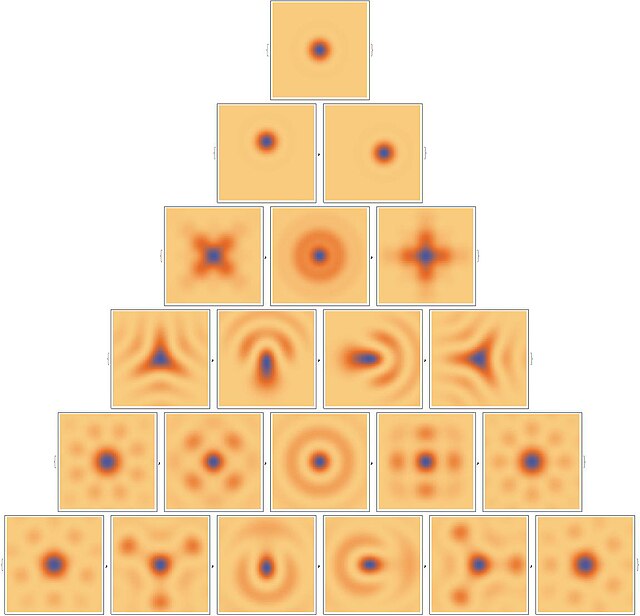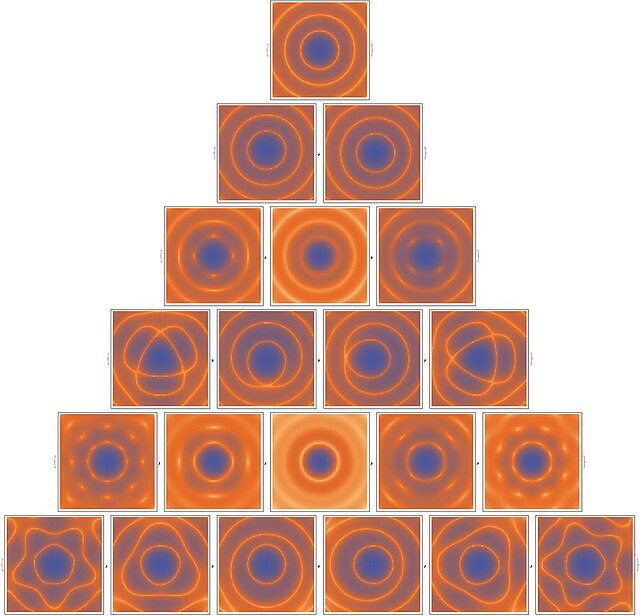In optics, aberration is a property of optical systems, such as lenses, that causes light to be spread out over some region of space rather than focused to a point. Aberrations cause the image formed by a lens to be blurred or distorted, with the nature of the distortion depending on the type of aberration. Aberration can be defined as a departure of the performance of an optical system from the predictions of paraxial optics. In an imaging system, it occurs when light from one point of an object does not converge into a single point after transmission through the system. Aberrations occur because the simple paraxial theory is not a completely accurate model of the effect of an optical system on light, rather than due to flaws in the optical elements.
Image plane of a flat-top beam under the effect of the first 21 Zernike polynomials.
Effect of Zernike aberrations in Log scale. The intensity minima are visible.
Laser guide stars assist in the elimination of atmospheric distortion.
Optics is the branch of physics that studies the behaviour and properties of light, including its interactions with matter and the construction of instruments that use or detect it. Optics usually describes the behaviour of visible, ultraviolet, and infrared light. Light is a type of electromagnetic radiation, and other forms of electromagnetic radiation such as X-rays, microwaves, and radio waves exhibit similar properties.
A researcher working on an optical system
The Nimrud lens
Reproduction of a page of Ibn Sahl's manuscript showing his knowledge of the law of refraction
The first treatise about optics by Johannes Kepler, Ad Vitellionem paralipomena quibus astronomiae pars optica traditur (1604), generally recognized as the foundation of modern optics.







